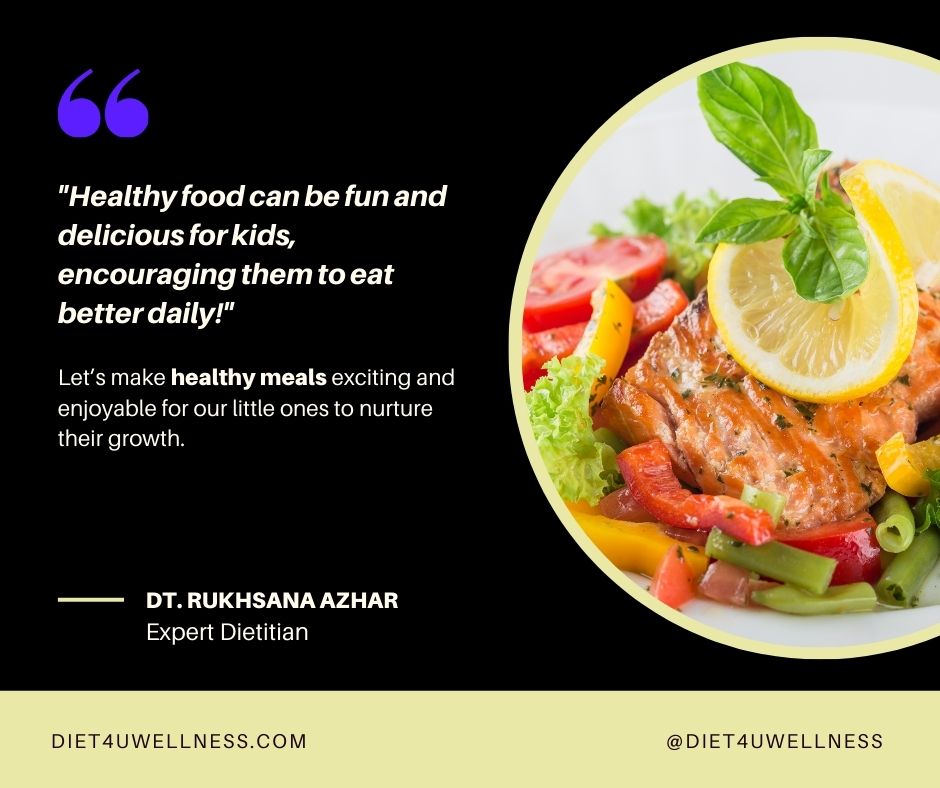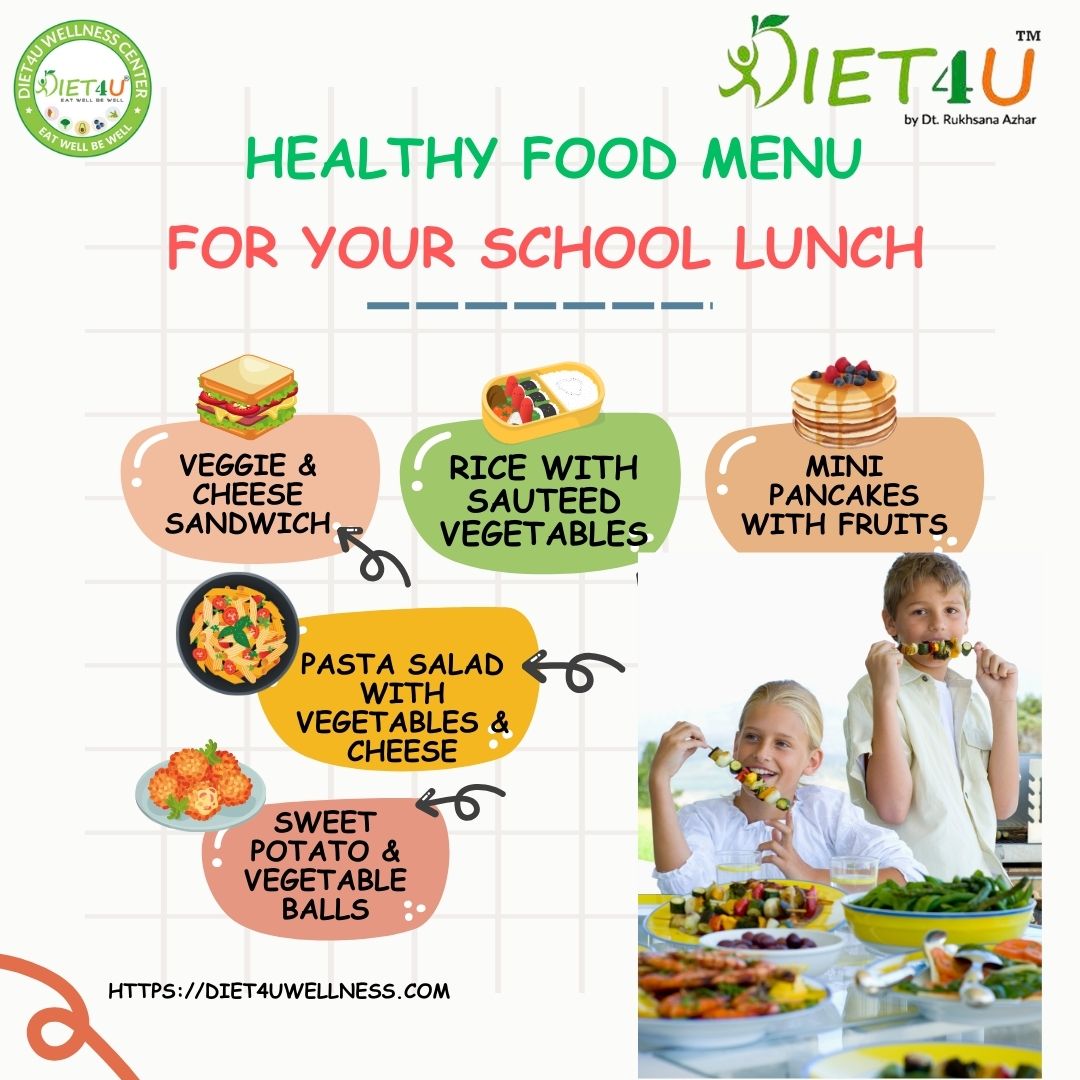
Healthy Food for Kids
Table of Contents
What is the nutritional value of snacks? Food consumed in between main meals is often referred to as a snack. Snacking is common among people, and there are several explanations for this.
The most typical occurrence is our tummies rumbling a few hours following our last meal. Another possibility is a decrease in energy, which can be fixed with a tiny snack.
Kids have boundless energy and are always learning and developing. We are all sustained by food, and kids’ food dramatically impacts them. Kids need food for daily survival, but they also need adequate nutrition to promote the growth of their bodies and minds.
Children participating in sports or being highly active have significantly greater energy requirements. It can be difficult to satisfy your kids’ appetites at times. On certain days, it feels like they are always rummaging through the cabinet for something to nibble on.
Youngsters are usually adept at determining when they are starving and eating to satisfy their energy requirements, which might change throughout the day.
Snacks are a vital component of a child’s diet and should be viewed as a means of increasing the amount of vitamins, minerals, and other nutrients your children are getting. Treat food for kids, on the other hand, usually contains more calories but less nutritional value.
According to market research conducted in the United States, fruit, sweets, chips, ice cream, candies, popcorn, soft drinks, cookies, pastries, milk, nuts and seeds, coffee, and yoghurt are the most popular snack options.
A person’s subsequent food choices and satiety level might be influenced by how they categorize an eating occasion (e.g., as a main course or a snack). Consequently, it’s critical to distinguish between “meals” and “snacks.”
Food for Kids: Understanding the Difference Between a Meal and a Snack:
There are some key distinctions between a full meal and a snack.
Portion size: Meals usually have bigger serving sizes than snacks. The purpose of meals is to supply the body with a larger quantity of calories and nutrients to support its functions.
Composition: Meals typically include a variety of dietary groups (such as fruits, vegetables, and/or protein) to ensure a balanced nutritional profile. Snacks are smaller meals that only contain one or two food for kids.
Timing: Three scheduled meals a day are known as meals (breakfast, lunch, and dinner). Snacks are more flexible and can be eaten whenever you like in between meals.
Meals have two purposes: they are supposed to quell hunger and supply the main source of nourishment for the day. Snacks are extra to fill the gap between meals or give a little energy boost.
Meals usually take more involved planning and cooking, whereas snacks are frequently easy to make, portable, and require little preparation.
Although distinguishing between snacks and meals might be subjective, keeping in mind these broad principles can help you make the distinction between the two categories of eating events.
Essential Food for Kids and Healthy Children’s Snacking Advice
It’s critical to support youngsters in forming good snacking habits from an early age. Parents can achieve this by implementing two tactics: providing nutrient-dense food for kids and establishing a suitable meal and snack routine.
Establish a timetable
Since kids and teenagers must eat every three to four hours, snacks are crucial in their daily routine. Examine your child’s routine and arrange to provide snacks for extended periods between meals. Ensure your snack period ends two or three hours before your next meal. Kids are frequently more ready to eat healthy snacks when they are hungrier during mealtimes.
When children are bored, anxious, or just thirsty, they frequently ask for a snack. If you stick to your program, food will be available for your child at their next supper or snack time. (Kids do well if you stick to a timetable!) Explaining that there are specific times of the day for eating is acceptable.
Make the appropriate snack choice
Buying single-serving packs of chips, cookies, or muffins for your kids to munch on is tempting because you and your children are both busy. However, there is a problem: those snacks need more nutrients to support youngsters’ growing minds and busybodies.
Combining two powerful nutrients—fibre and protein—can help you create a nutritious snack. Rich in minerals, whole grains, nuts, seeds, and fruits are just a few food for kids that contain fibre. Children who consume fibre will feel content for longer since it is slowly digested and maintains a healthy digestive tract. In addition to serving as a vital building component for growth, protein actively supports the immune system, which helps to maintain our health. Fibre and protein work in tandem to keep children satisfied, energized, and attentive.
Best Food for Kids: Which Snacks Are Appropriate for Toddlers?
Please give them a choice between two or three nutritious options; toddlers enjoy feeling in charge. Reduced amounts of the food you offer at meals can be provided, or you could try:
- Slices or bits of fruit, applesauce, cooked vegetables
- Graham crackers
- Cheese cubes
- Greek yoghurt
- Whole-grain, reduced-sugar breakfast cereals
- Avoid edibles like grapes, pretzels, raisins, popcorn, almonds, hot dogs, sausages, pieces of meat, hard cheese, raw vegetables, and hard fruits that might induce choking.
Best Food for Kids: Which Snacks Are Suitable for preschoolers?
Since preschoolers are not dull people, why must their snacks be? Extending the snack menu doesn’t have to be difficult or time-consuming; just be creative.
Here are some entertaining snack ideas:
Cut it out! Use a cookie cutter to cut cheese, fruit, vegetables, and sandwiches into deliciously interesting shapes.
Dip it! Serve a dip alongside slices of fruit, vegetables, or whole-wheat crackers. Everyone enjoys dipping in yoghurt, applesauce, salsa, guacamole, peanut butter, or low-fat ranch dressing.
Make it happen! Utilize food to create art. Make some flower art by wrapping a slice of kiwi with apple-wedge flower petals. Or even humorous food faces, like a banana mouth and berry eyes.
Take a drink! Who dictates you have to have a nutritious nibble? Kids can get critical nutrients through fruit smoothies made with frozen or fresh fruit, low-fat yoghurt, or milk.
Play it! Make munching on healthy food a game for kids. Let your youngster choose what hues to eat first from a “food rainbow” you make on a dish, for instance. You may replicate this with other shapes the next time. Which will it be, squares or triangles?
Best Food for Kids: Which Snacks Are Suitable for Children in School?

Kids of school age could enjoy the following healthy snacks:
- Homemade trail mix containing nuts, raisins, and whole-grain cereal for breakfast.
- String cheese paired with fruit, such as grapes
- Smoothies with fruits made with dairy-free milk substitutes, yoghurt, or milk
- Frozen treats are produced entirely from juice from fruits or yoghurt, placed in ice cube trays or pop moulds. Before freezing, the diced fruit is stirred in.
- Whole-grain peanut butter pretzels
- Slices of fruit dipped in flavoured yoghurt low in fat or vegetables dipped in hummus
Snacks After School
When your children get home from school, do they immediately go to the kitchen to grab a snack? Many children get hungry after school. Many children have lunch early and attend school in the afternoon. Some people could have an after-school activity before they get another chance to eat. It can still be six hours or longer before they eat dinner, even if their midday meal is later.
Snacks after school can improve kids’ nutrition and reduce hunger. Choosing healthful after-school snacks for kids doesn’t have to interfere with dinnertime.
Make a list of nutritious options
Treats like chips and chocolates should be the exception instead of the rule concerning after-school snacking. Together, you should brainstorm a list of healthful options with your children. Add a range of nutritious grains, protein-rich food for kids, and fresh fruits and vegetables. Serving healthy snacks most of the time is preferable to an occasional pleasure.
Determine the Time
- When organizing snacks, take your child’s eating routine into account:
- When is lunch?
- What do they eat for lunch, and how much of it?
- Do they partake in an after-school program or a midday snack at school?
- When is dinner?
Make Selecting Healthful Snacks Simple
Particularly when hungry, kids tend to eat whatever happens to be handy. Make selecting wholesome after-school snacks simple. One may:
Place wholesome snacks in plain sight for children to see. Fruit should be kept on the counter, and your refrigerator should be stocked mostly with nutritious foods like yoghurt and chopped veggies.
Prepare wholesome snacks in advance.
Stow wholesome food in backpacks or lunchboxes.
Making snacks with your child might be fun if you stay home after school. A few inventive healthy snacks that kids love are:
- Nuts on a stem (celery leaves sprinkled with almond butter and raisins, or “ants”)
- Egg Boats: cheese sail on hard-boiled egg wedges
- Skewered fruit pieces with yoghurt for dipping, known as fruit kabobs
Crafting homemade trail mix, popcorn dusted with parmesan cheese, or smoothies could be enjoyable activities for older kids.
Here is a sample nutrition chart for kids:
Age Group
- Infants (0-12 months)
- Toddlers (1-3 years)
- Preschoolers (4-5 years)
- School-age children (6-12 years)
- Teenagers (13-18 years)
Nutrient
- Energy (kcal)
- Protein (g)
- Fat (g)
- Carbohydrates (g)
- Fibre (g)
- Vitamin A (mcg)
- Vitamin C (mg)
- Calcium (mg)
- Iron (mg)
Recommended Daily Intake
Infants (0-12 months)
- Energy: 400-700 kcal
- Protein: 10-15 g
- Fat: 20-30 g
- Carbohydrates: 45-65 g
- Fibre: 4-6 g
- Vitamin A: 400-600 mcg
- Vitamin C: 40-60 mg
- Calcium: 200-300 mg
- Iron: 0.5-1.5 mg
Toddlers (1-3 years)
- Energy: 1000-1400 kcal
- Protein: 16-20 g
- Fat: 30-40 g
- Carbohydrates: 60-80 g
- Fibre: 6-8 g
- Vitamin A: 600-800 mcg
- Vitamin C: 60-80 mg
- Calcium: 500-700 mg
- Iron: 3-5 mg
Preschoolers (4-5 years)
- Energy: 1200-1600 kcal
- Protein: 20-25 g
- Fat: 35-45 g
- Carbohydrates: 80-100 g
- Fibre: 8-10 g
- Vitamin A: 800-1000 mcg
- Vitamin C: 80-100 mg
- Calcium: 800-1000 mg
- Iron: 5-7 mg
School-age children (6-12 years)
- Energy: 1600-2000 kcal
- Protein: 25-30 g
- Fat: 40-50 g
- Carbohydrates: 100-120 g
- Fibre: 10-12 g
- Vitamin A: 1000-1200 mcg
- Vitamin C: 100-120 mg
- Calcium: 1000-1200 mg
- Iron: 7-10 mg
Teenagers (13-18 years)
- Energy: 2000-2400 kcal
- Protein: 30-35 g
- Fat: 45-55 g
- Carbohydrates: 120-140 g
- Fiber: 12-15 g
- Vitamin A: 1200-1500 mcg
- Vitamin C: 120-150 mg
- Calcium: 1200-1500 mg
- Iron: 10-15 mg
Please note that these are general guidelines and may vary depending on individual needs and circumstances. For personalized recommendations, consult a healthcare professional or registered dietitian like Dt. Rukhsana Azhar from Diet4U Wellness.
FAQs Related to Food for Kids
Q1: What are the best healthy snack options for kids, according to Dt. Rukhsana Azhar from Diet4U Wellness?
A1: Dt. Rukhsana Azhar recommends fresh fruits, cut veggies with hummus, whole-grain crackers, nuts, and seeds as healthy snack options for kids.
Q2: How often should kids snack?
A2: Kids should snack every 2-3 hours to maintain energy levels and support growth.
Q3: What snacks should I avoid giving my kids?
A3: Limit or avoid snacks high in added sugars, salt, and unhealthy fats, such as chips, candy, and cookies.
Q4: Can kids have dried fruit as a snack?
A4: Dried fruit can be a healthy snack, but choose unsweetened and unsulphured varieties.
Q5: How can I make healthy snacking fun for kids?
A5: Try cutting fruits and veggies into fun shapes, creating a snack mix with nuts and dried fruit, or making a homemade trail mix.
Q6: Are granola bars a healthy snack option for kids?
A6: Some granola bars contain added sugars and unhealthy ingredients. Look for homemade or store-bought options with wholesome ingredients.
Q7: Can kids have popcorn as a snack?
A7: Yes, air-popped popcorn is a healthy snack, but be mindful of added salt and butter.
Q8: How can I encourage my kids to nutrition by trying new healthy snacks?
A8: Lead by example, offer small portions, and involve them in the snack preparation process.
Q9: What are some healthy snack options for kids with food allergies?
A9: For kids with common food allergies, consider sunflower seed butter and jelly sandwiches, fruit kebabs, or veggie sticks with guacamole.
Q10: What is the most important thing to remember when it comes to healthy snacks for kids, according to Dt. Rukhsana Azhar from Diet4U Wellness?
A10: Dt. Rukhsana Azhar emphasizes the importance of involving kids in snack preparation and making healthy snacking a fun and sustainable habit.

Hello My Name is Dt. Ruksana Azhar and I am a certified dietician and providing online & offline services for Weight Management, PCOS/PCOD Management, Diabetes Management , etc. I have 12+ years of experience in the Apollo Hospital Delhi , Max Super Specialty Hospital Delhi, Lilavati Hospital Mumbai and VLCC healthcare Mumbai. I loves to write healthcare and lifestyle related blog. My favorite part of being a doctor is the opportunity to directly improve the health and wellbeing of my patients and to develop professional and personal relationships with them.



